-
[PR]
×
[PR]上記の広告は3ヶ月以上新規記事投稿のないブログに表示されています。新しい記事を書く事で広告が消えます。
-
SIMCom Brings A High-Speed 5G+Wi-Fi 7 Indoor Router
In the current era of rapid AI technology development, smart devices are constantly evolving, and seamless, high-speed connectivity has become a key element in driving the development of next-generation applications. At the MWC25 World Mobile Communications Conference and the 2025 Embedded Exhibition in Germany, SIMCom teamed up with industry-leading company Luxshare Precision to jointly showcase the 5G indoor CPE BE17000 Wi-Fi 7 Mesh Router, which significantly enhances smart terminal connectivity performance through cutting-edge 5G technology.
Relying on Luxshare Precision’s product development and manufacturing capabilities and SIMCom’s technological accumulation in communication modules, the collaboration provides high-performance, highly reliable wireless communication solutions for smart offices, industrial internet, commercial complexes, and other scenarios, promoting the large-scale application of 5G and Wi-Fi 7 technologies in vertical industries.

Technological Synergy: The Integration of 5G+Wi-Fi 7 Advantages
This 5G + WiFi 7 router integrates the SIMCom SIM8262E-M2 module, which enables 5G network capabilities simply by inserting a SIM card. With Wi-Fi 7 Mesh technology, it allows 5G networks to be shared among multiple Wi-Fi devices, achieving significant improvements in network coverage, transmission speed, and overall capacity.
5G Technology Advantages:
Based on Qualcomm’s Snapdragon X62 5G modem, it supports the main global 5G frequency bands. Whether in the Sub-6GHz or millimeter-wave frequency bands, it ensures stable transmission, meeting the communication needs of diverse scenarios.
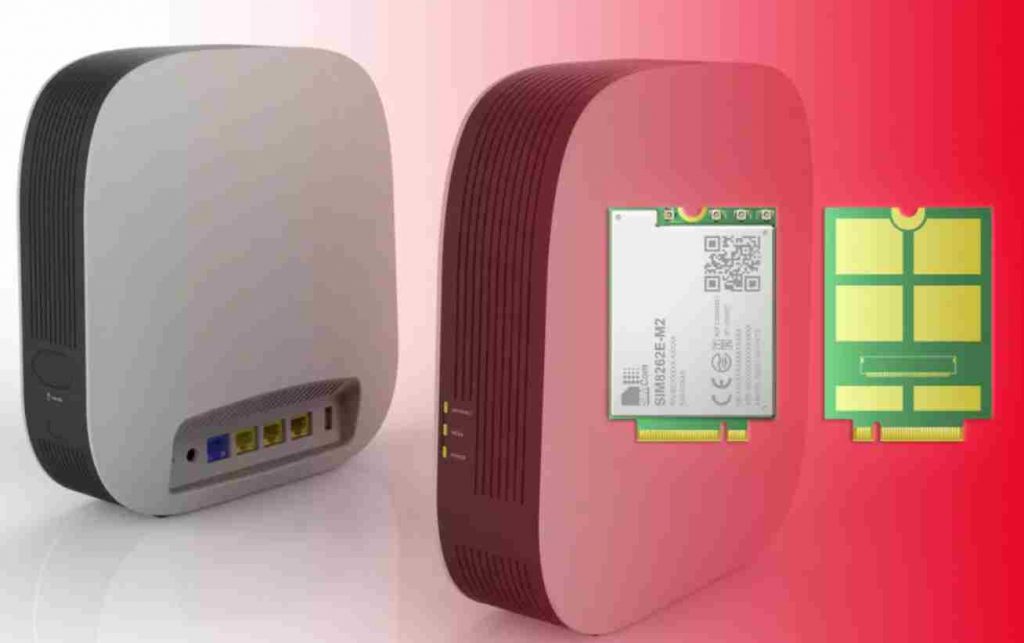
Wi-Fi 7 Mesh Features:
By utilizing dynamic narrowband technology and multi-link aggregation, it optimizes network coverage and interference resistance. The 320MHz channel and 4K QAM technology provide high-speed transmission capabilities, supporting applications such as high-definition video playback, efficient file downloads, and smooth video conferencing.
The SIMCOM SIM8262E-M2 is a multi-band 5G NR/LTE-FDD/LTE-TDD/HSPA+ module that supports R16 5G NSA/SA, with a transmission speed of up to 2.4Gbps. It has strong expandability with rich interfaces, including PCIe, USB3.1, GPIO, and more. It is compatible with terminal devices requiring high module dimensions and network speed, such as laptops, drones, industrial tablets, MiFi, dongles, DTUs, and AR/VR headsets.
Scenario Adaptability: Unlocking Application Value Across Multiple Fields
The 5G indoor CPE BE17000 Wi-Fi 7 Mesh Router, with its reliable performance, is suitable for various scenarios:
- Commercial Office Scenarios: It builds a stable office network environment for enterprises, supporting the needs of multiple people working online simultaneously, video conferencing, and enhancing collaboration efficiency.
- Home Use Scenarios: It meets the multi-device networking needs within homes, providing a smooth experience for audiovisual entertainment and smart home device integration.
- Industrial Application Scenarios: In industrial parks, warehouses, logistics, and other environments, it ensures stable data transmission, supporting remote management and monitoring of smart devices, and promoting the development of industrial internet applications.
With the continuous expansion of AI applications, high-speed, stable, and adaptive connectivity will play a crucial role in various industries, opening new development opportunities for intelligent manufacturing, smart healthcare, smart cities, and more. SIMCom will continue to increase R&D investment, drive technological innovation, and work with partners to build an interconnected smart world.
PR -
SIMCOM AI 5G 6G Products in MWC 2025
AI
At this year’s MWC, Artificial Intelligence (AI) was undoubtedly the brightest star. With the explosion of generative AI technology, more and more companies are starting to apply it across various fields. From intelligent customer service to autonomous driving, from content creation to office collaboration, AI is gradually permeating every aspect of our lives. Especially in the fields of consumer electronics and payments, the integration of AI technology has made devices such as smartphones, PCs, smart glasses, smart payment systems, and smart toys more intelligent and personalized.
SIMCOM participated in this year’s MWC by showcasing a series of products, such as the high-performance smart module SIM9650L and the 4G smart module SIM8965. These modules integrate cutting-edge AI algorithms and hardware design, providing powerful computing and data processing capabilities, thus driving the intelligent upgrade of smart terminal devices.
SIMCOM also made its debut by launching the SIMCom AI Stack, a full-stack AI solution based on its AIoT module matrix, aimed at helping customers address the pain points in the practical application of AI on the edge. This solution helps to build a complete and efficient value chain for edge-side AI.
In the future, SIMCOM will soon introduce more high-performance smart modules, working with global partners to accelerate the implementation of edge-side AI applications.
5G
As the upgraded version of 5G technology, 5G-Advanced (5G-A) also attracted significant attention at this year’s MWC. 5G-A not only improves network performance but more importantly, it begins to deeply integrate with various industries, driving digital transformation across sectors.
At the exhibition, several telecom operators showcased practical use cases of 5G-A technology in fields such as industrial IoT, low-altitude economy, and remote healthcare. Major telecommunications equipment manufacturers also demonstrated end-to-end solutions and industry application cases based on 5G-A technology, gradually bringing 5G-A technology to life.
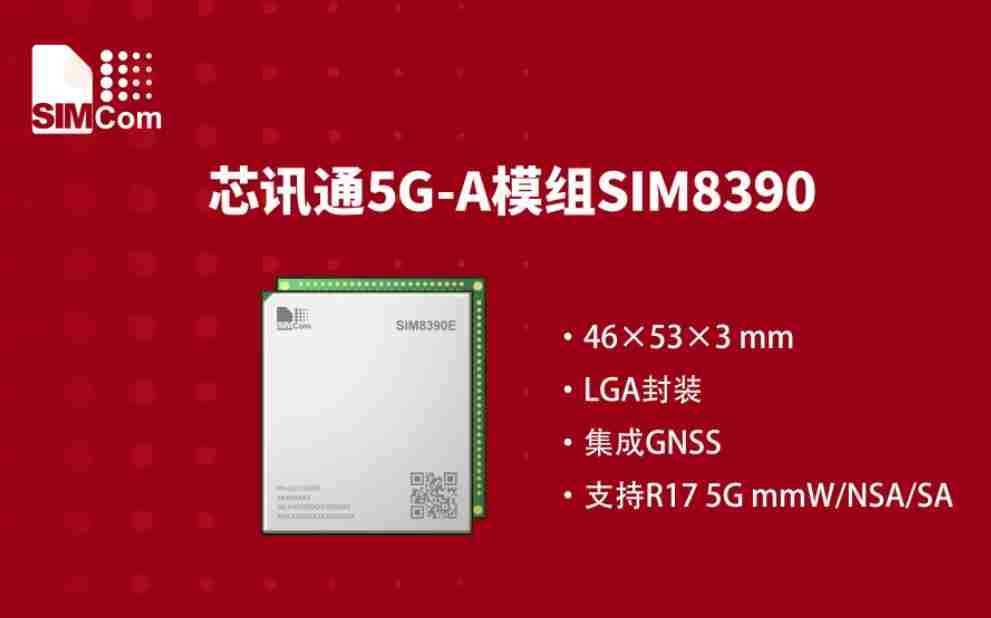
SIMCOM has also strategically entered the 5G-A field early on. The SIMCOM SIM8390, an upgraded version of 5G, supports Sub-6GHz and mmWave frequency bands, offering higher speeds, lower latency, greater connection scale, and lower energy consumption. It has become favored by industry customers in high-speed applications and premium markets in Europe.
SIMCOM’s 5G-A strategy focuses not only on technological upgrades but also on industry adaptability. By collaborating with operators and equipment manufacturers, SIMCOM offers end-to-end solutions that help customers quickly integrate the full chain from network deployment to application, acting as an “accelerator” for enterprise digital transformation.
6G
At this year’s MWC, many companies showcased their latest research results and future plans regarding 6G technology.
Currently, 6G technology is expected to be fully commercialized around 2030, with transmission rates potentially reaching 1Tbps, far exceeding current 5G capabilities. Additionally, 6G will support AI-native networks, holographic communication, low Earth orbit satellite networks, and other advanced technologies, driving the arrival of the Internet of Everything era. In the consumer electronics sector, the introduction of 6G technology will empower smart terminal devices with higher performance and richer functionalities.
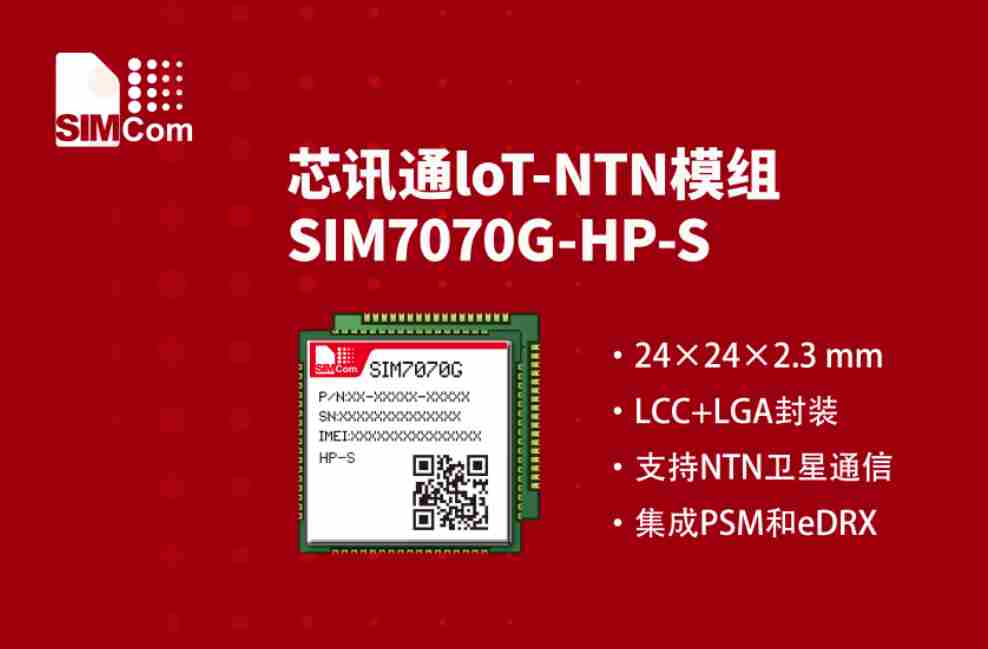
Although the commercialization of 6G is still some years away, SIMCOM has already laid the groundwork for its technological advancement. In 2023, the company launched the SIM7070G-HP-S, a satellite communication module supporting 3GPP NTN (Non-Terrestrial Networks). This module supports 3GPP Rel-17 (IoT-NTN) satellite communications in the L-band (B255) and S-band (B256/B23) frequency ranges. It also supports Cat-M/Cat-NB2 wireless communication modes and can be applied in maritime, transportation, agriculture, and energy sectors, contributing to the promotion and implementation of satellite IoT applications.
This year’s MWC 2025 highlighted three cutting-edge technologies: AI, 5G-A, and 6G, showcasing the latest trends and innovative achievements in the global telecommunications industry. As a pioneer in the global IoT communication module industry, SIMCOM actively participated and demonstrated its strong capabilities and forward-thinking vision in the field of communication technology. As these technologies continue to develop and be applied, we will usher in a more intelligent, digital, and interconnected future.
-
Fibocom Launches LPWA Cat.M Module MQ780-GL
On March 5, during the 2025 World Mobile Congress (MWC Barcelona 2025), Fibocom unveiled the compact Cat.M module MQ780-GL, based on the Qualcomm® E51 4G modem and RF solution. The Fibocom MQ780-GL, with its four core advantages of ultra-compact size, ultra-low power consumption, global frequency band coverage, and stable network compatibility, provides cost-effective IoT connectivity solutions for scenarios such as smart metering, asset tracking, and smart cities, accelerating the commercialization of LPWA technology on a large scale.
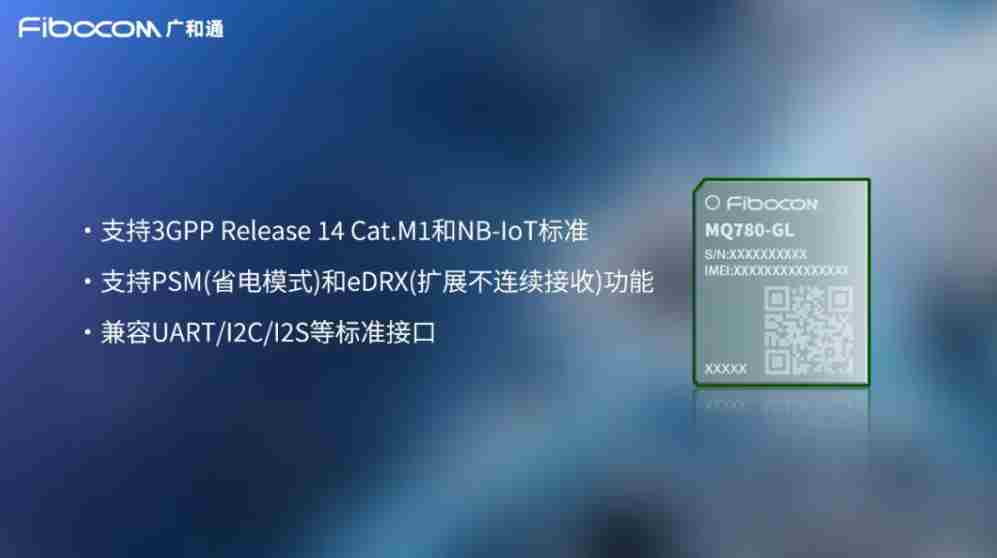
Dual-Mode Support, Flexible Deployment
Fibocom MQ780-GL supports 3GPP Release 14 Cat.M1 and NB-IoT standards, allowing automatic mode switching based on the network environment to maximize coverage and connection reliability. The 4G LPWA module is compatible with global mainstream frequency bands, suitable for LPWA network deployments in North America, Europe, Asia, and other regions, facilitating stable global connections.
Compact Size, Ultra-Low Power Consumption
Fibocom MQ780-GL incorporates advanced power management technology, supporting PSM (Power Saving Mode) and eDRX (extended Discontinuous Reception) functions, significantly extending the battery life of devices. In PSM mode, the standby current is as low as microampere level (μA), making it suitable for devices such as water meters and gas meters that require more than 10 years of battery life. The Fibocom 4G module adopts an LCC+LGA package design, suitable for space-constrained IoT devices.

Enhanced Performance, Rich Interfaces
Fibocom MQ780-GL supports a variety of network protocols such as MQTT/CoAP/LwM2M, and is compatible with standard interfaces such as UART/I2C/I2S, facilitating expansion to more IoT devices. In terms of positioning capabilities, the MQ780-GL has built-in Soft GPS positioning function, meeting the high-precision positioning needs of scenarios such as asset tracking. Fibocom MQ780-GL also has a built-in hardware-level security engine, supporting data encryption and security authentication, ensuring the security of device and network communication.
-
Quectel 5G RedCap Module RG255C-GL Passes Certification from Two Major North American Operators
Recently, Quectel’s 5G RedCap module RG255C-GL achieved another milestone by successfully passing the certification from two major North American operators. This certification marks that the module now fully meets the high standards of North American carriers, offering more efficient and reliable RedCap connectivity to local users, further strengthening Quectel’s competitive edge in the global IoT market.
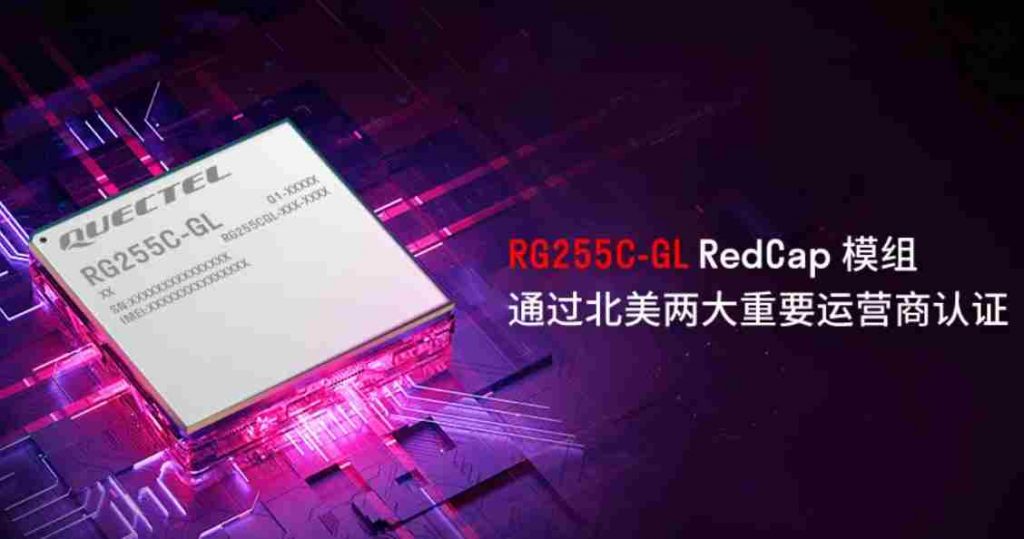
Technological Innovation: Lightweight 5G Empowering Vertical Industries
The Quectel RG255C-GL module is based on the Qualcomm® Snapdragon® X35 platform and is equipped with 5G RedCap technology, specifically designed for high-speed IoT scenarios. As a lightweight 5G technology defined by the 3GPP R17 standard, RedCap reduces the number of terminal antennas, lowers modulation complexity, and decreases bandwidth requirements. While retaining key 5G benefits like low latency, high reliability, and network slicing, it significantly optimizes device cost, size, and power consumption, filling the market gap between traditional eMBB and LPWA.
This 5G Redcap module supports 5G Sub-6 Standalone (SA) mode and LTE Cat 4 networks, with peak download speeds of 223 Mbps and peak upload speeds of 123 Mbps, making it suitable for entry-level FWA applications, industrial sensors, and high-definition video transmission in mid- to high-speed IoT scenarios. It also supports key 5G features such as 5G LAN, uRLLC, and network slicing. In terms of positioning, the RG255C-GL integrates Qualcomm® IZat™ location technology, supporting global mainstream satellite positioning systems such as GPS, GLONASS, BDS, Galileo, and NavIC, providing precise location services for smart terminals.
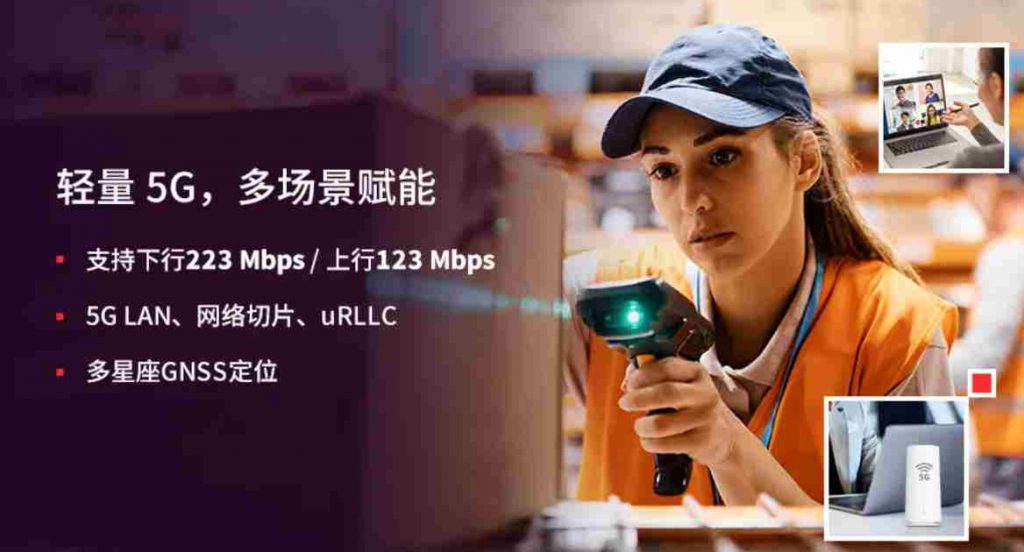
High Integration Design: “Compact Size” Empowering “Large Scenarios”
The Quectel RG255C-GL adopts an LGA package with dimensions of 32.0 mm × 29.0 mm × 2.4 mm, making it compact in design. The Quectel 5G module’s size is consistent with and compatible with Quectel’s classic LTE Cat 4 module EG2x series, significantly reducing the hardware adjustment requirements for customers migrating from 4G to 5G, shortening development cycles, and lowering mass production costs. Additionally, the Quectel 5G module integrates a variety of interfaces, including USB 2.0, PCIe 2.0, PCM, UART, SGMII, and SPI, and can be paired with multiple Quectel antennas, helping terminal manufacturers quickly bring products to market and seize business opportunities.

Previously, the Quectel RG255C-GL had successfully obtained GCF global certification, North American FCC, IC, PTCRB certifications, European CE certification, and Australian RCM certification. With this latest certification from two major North American operators, the module will promote the large-scale deployment of 5G RedCap technology in global FWA and industrial automation scenarios. Moving forward, Quectel will continue to deepen its cooperation with global operators and industry partners, empowering the digital transformation of various industries with innovative technologies.
-
Fibocom and MediaTek Collaborate to Demonstrate FG370 Module with Modem AI and 3Tx+L4S
On March 5, during the 2025 Mobile World Congress (MWC Barcelona 2025), Fibocom and MediaTek jointly demonstrated the technical performance of the FG370 module based on the MediaTek T830 platform, featuring Modem AI and 3Tx (3-antenna transmission) + L4S (Low Latency, Low Loss, and Scalable Throughput). These features meet the product development needs of global leading operators for 5G FWA (Fixed Wireless Access) and MiFi (Mobile Broadband) in their respective application scenarios, including precise network prediction, intelligent network selection strategies, and optimized air interface performance.

Fibocom FG370, equipped with MMAI (MediaTek Modem AI), significantly enhances network connection efficiency in four weak-signal scenarios: high-speed railways, underground environments, airports, and remote suburban areas. In airports, AI-driven network prediction improves network search speed by over 50%. In outdoor mobile scenarios, MMAI provides an AI hiking mode, optimizing weak-signal and high-power consumption issues, resulting in a 10% energy saving for devices. In high-speed railway scenarios, Fibocom 5G AI module with MMAI ensures faster and more stable terminal connectivity, while in underground environments, it enables rapid 5G network recovery.

Most connected terminals support only two transmission chains, which greatly limits uplink throughput. Fibocom FG370, applied in 5G FWA and MiFi, utilizes 3Tx technology to support three transmission chains, significantly boosting peak uplink throughput. According to Fibocom’s lab tests, compared to 2Tx, 3Tx can increase throughput by up to 68% by adding spatial streams. The L4S technology provides terminals with a low-latency, low-packet-loss, and scalable throughput network experience. Tests show that combining 3Tx and L4S delivers 1.9 times the bandwidth of 2Tx while significantly reducing latency.
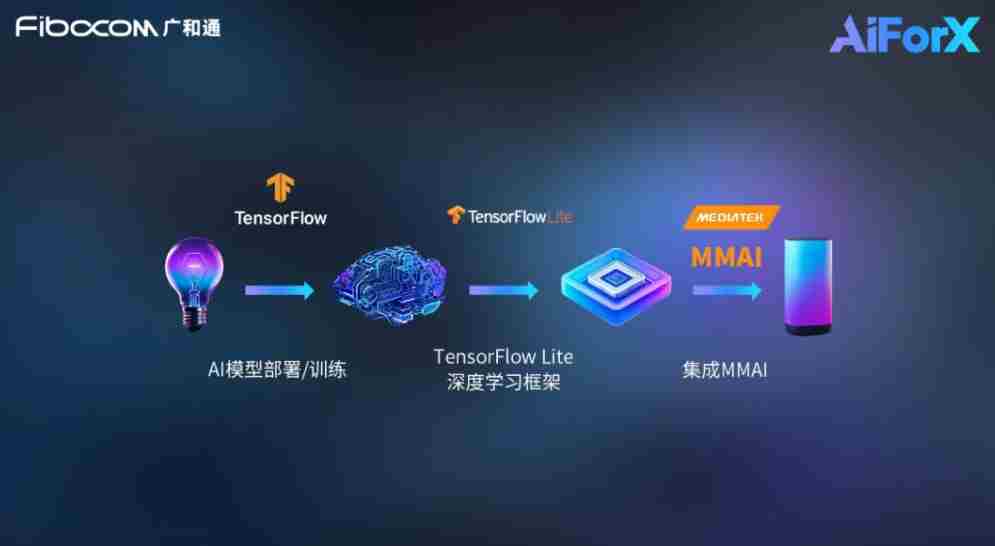
Additionally, The FG370 5G AI Module supports 8Rx and 3GPP Rel-17 standards, including HUPE TDD PC2/PC1.5 and FDD PC2 communication capabilities, greatly improving signal quality at the cell edge and enhancing throughput. Fibocom assists global leading operators in rapidly developing 5G FWA and MiFi products, reducing development costs while improving efficiency. Based on user needs, Fibocom will continue to develop and support key 5G technologies, enabling the widespread adoption of 5G FWA and MiFi in more scenarios.
